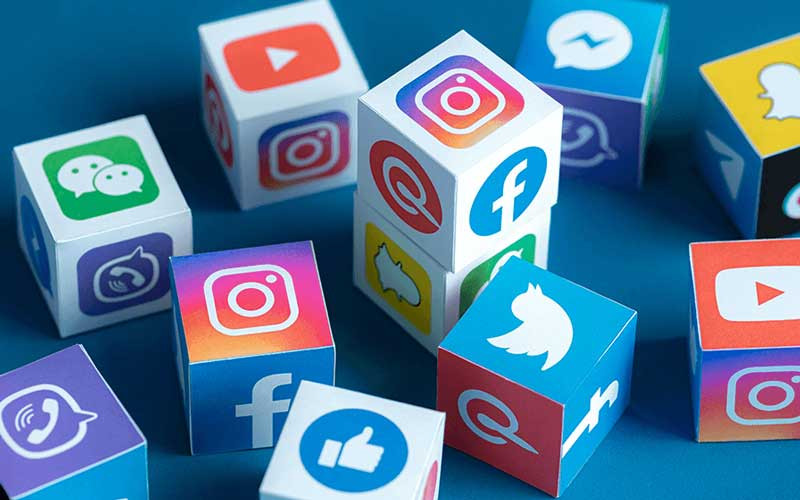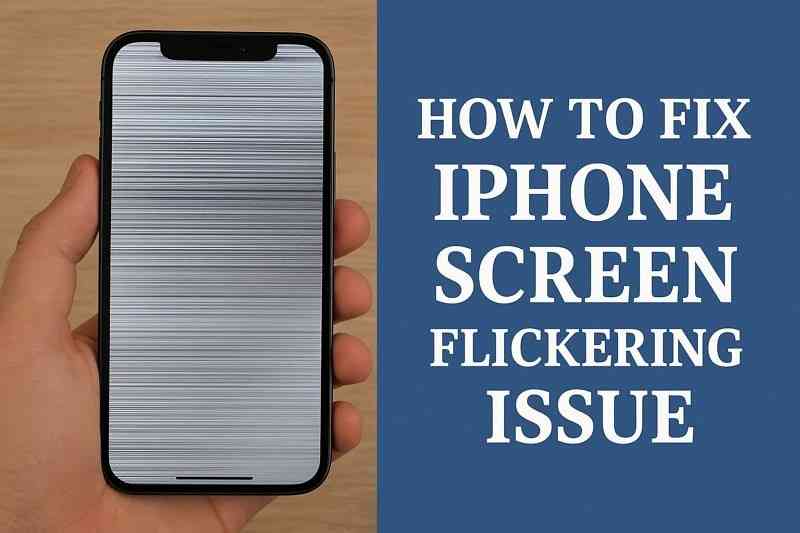
After seven years at Snapchat, I finally learned the truth about why our most important apps seem destined to disappoint us.
I thought this time would be different.
More specifically, I thought Snapchat would be different.
I spent more than seven years there, writing almost everything from in-app copy to pitch decks, trying to make Snapchat different from every other social media app. And then, the other day, I received a push notification from the app telling me to wish my nemesis a happy birthday. This might read as normal or even expected to most of you, but I recognized the notification for what it really was: a death knell for a social media platform past its prime.
From its earliest days, Snap wanted to be a healthier, more ethical social media platform. A place where popularity wasn’t always king and where monetization would be through creative tools that supported users — not ads that burdened them. I preached that friends mattered more than followers and acquaintances and that moments consumed in chronological order (like in real life) were better than those mixed up by an algorithm. And I impressed on new hires that we were building something different from the Facebooks and Twitters of the world and would never resort to their manipulative growth hacking.
This was why I joined Snapchat in the beginning, but in the end, Snap had given in to the most common of growth hacks: a push notification demanding the shallowest of interactions. To me, this notification didn’t indicate an imminent death for Snap’s revenue streams, which could take many years to dwindle, but of its relevance to those of us who use it every day. Because when you’re begging your users to just open the app, something isn’t quite working.
Sadly, this story is not just about Snap. It’s about a pattern that all social media apps seem doomed to repeat — to veer from their initial promise of a place to connect and share with friends and family, toward something entirely different. How is it possible that social media apps always seem fated to manipulate and disappoint us?
This cycle has become all too familiar to me after growing up on AIM and Myspace, going to college on Facebook, and watching dozens of social companies rise and fall as a reporter at Insider and The Verge. Each platform began honorably, with young founders enthusiastically revealing that if you aren’t paying for the product, you are the product. “We’re going to do things differently around here!” they say through a grin.
- Social media is doomed to die
Keep Reading
And then the founders discover, one by one, that there’s something not quite right about the business of social media. They made their apps free to scale their community, and then they found there was no turning back. Unfettered growth became the only way forward, no matter how unrecognizable the product had to become to get there.
Unlike most other businesses on Earth that live and die by their customers’ demands, social media services are caught trying to satisfy both their users and the people actually paying for it all: investors and advertisers.
The needs of these groups are dramatically different. Users want what the platform was originally for — be it ephemeral messaging, sharing photos, or otherwise. Surprising, energized spaces to connect with friends in a new way. But these use cases inevitably have a limit. You can only post so many photos. You only have so many friends to message. And for investors and advertisers, that’s a problem. So each social network has to find ways to make you send another photo, or it has to deploy a brand-new feature and encourage you to use that, too. More usage, more space for ads, more money for investors.
When I covered the launch of Snapchat Stories for The Verge many years ago, I read it as an evolution of Snap’s core mechanic: ephemeral messaging. But over the years, I came to think of it as a somewhat radical evolution from an app built and designed for messaging to an app for broadcasting, like the rest of social media. As I reread that piece I wrote all those years ago, it was actually clear from the beginning that Stories was intended to someday include ads. And once that ad spigot got turned on, the cycle had officially begun.
When a company submits to digital advertising, there’s no avoiding the tradeoffs that come with it. And users get put in the back seat.
“We want the chronological feed back!” Instagram users scream into the void. “Here, have Reels and Shopping,” said Instagram’s CEO, on the hunt for new revenue streams.
“We want freedom of speech!” tweet the denizens of Twitter. “But then our sponsored hashtags won’t be brand safe,” said Twitter’s CEO (whoever that is this week).
“We want to show our kinky side!” Tumblr users blogged to the heavens. “Sorry, can’t do it,” said the overlords at Yahoo. “It’s scaring the advertisers!”
And so, the slow, slippery journey toward ever more misalignment between user and product continues. Even when the going’s good, all life (we’re told) has to grow. And more ads appear in your feed, forever.
“It won’t happen to us,” we said, and then it did.
Today, the product evolution of social media apps has led to a point where I’m not sure you can even call them social anymore — at least not in the way we always knew it.
They each seem to have spontaneously discovered that shortform videos from strangers are simply more compelling than the posts and messages from friends that made up traditional social media. Call it the carcinization of social media, an inevitable outcome for feeds built only around engagement and popularity.
So one day — it’s hard to say exactly when — a switch was flipped. Away from news, away from followers, away from real friends — toward the final answer to earning more time from users: highly addictive shortform videos that magically appear to numb a chaotic, crowded brain.
I am here for the Japanese frog videos I see on TikTok. But in no way do I see them as a replacement for keeping up with friends and family — the goal of social media to begin with.
“Everything became an infinite feed, instead of acknowledging that friend content might just be 10 minutes of your day,” says Antoine Martin, the co-founder of Zenly, a delightful location-sharing app that Snap acquired in 2017 and recently shuttered, and now amo, a forthcoming social app. “That’s fine — you just need to find a business model that fulfills it!”
But when the implicit contract with investors is 100x or bust from the get-go, inventing that business model after the fact just doesn’t work.
I've spent a lot of time blaming founders for changing their products at the whims of advertisers, but to any social platform’s credit, the users do indeed do it to themselves.
In our own eternal quests for social validation, we’re out for growth, too! We readily give in to convenient, advertiser-friendly features like Stories, which prioritize broadcasting over simply communicating. We add more and more friends — because it feels good! — until our close friend group has become our audience.
“People want to be a product!” technology writer Rob Horning wrote to me via email. “Being a product is coded as success in our society… What people don’t want is to be exploited or misled — and that is hard to avoid in the context of ad-supported media.” And so, a bizarre symbiosis is formed between platform, user, and advertiser. The apps had changed, but so had users, leaving that precious early social media feeling out in the cold again.
Only later do we look back and reminisce on how fun things used to be, whether it was Instagram’s early filters, Facebook’s wall posts, Snapchat’s selfie messages, or Twitter’s mundane text posts. But would we go back?
In these nostalgic sentiments — which appear on social media, of course — I’ve always sensed denial. People refuse to believe that they, too, are responsible for the growth of today’s social media as well as the death of apps like the intimate and beautiful Path they eagerly pine for.
At Snap, we knew this fate could someday come — for ourselves and our users. So our imaginative design team devised ways to stop the cycle, from ephemeral messages that couldn’t be pored over again and again, to how Stories couldn’t be liked, to how (deliberately) hard it was to add a friend, and even Snap’s much-publicized decision to move Kylie Jenner down the Stories page below your closest friends, a bold decision that Snap never got enough credit for.
But when you’re gunning for an IPO, there’s simply no way to justify keeping things small. Little “frictions” are removed one by one, research and development goes more into content than messaging, and lo and behold, the growth comes!
ince leaving the world of social media and joining The Browser Company several months ago, I’ve had a lot of time to reflect on my past as a social media user, critic, marketer, designer, and adviser. Maybe I had to be outside to truly look in — a weird ego check for someone who thought they knew everything about this stuff.
As a new crop of social platforms has started to emerge, from protocols like Mastodon to intimate apps like Locket and BeReal, I’ve noticed a change in how startups are approaching social media — and even the traditional path of starting up. These apps don’t aim to put the entire college experience online as Facebook once did. They seek to create new experiences based on our needs today.
These new apps and protocols are evolving more slowly, but what if that’s a benefit? Perhaps now that the costs of creating a feed or messaging app have dropped precipitously and Big Tech innovation has shifted to other topics, there’s a vacuum for social again. As we’ve learned over the decades in tech, a freer space for new ideas usually wins… eventually. It might take 30 years, but new inventors catch on, and they realize who their customers really are.
At the beginning and end and beginning again of all social things, I wonder if this time will be different. I wonder if we can build social technology brave enough to treat us like customers, not users. Or simply find a better way to monetize the deep engagement you find on today’s newest content platforms, be it Substack, Patreon, or others. Julie Young, always a keen investor and watcher, told me, “Monetizing creator-audience transactions directly is a much higher [average revenue per user] endeavor than monetizing off of advertising.”
But can these new entrants find the wherewithal to get started without the same promise?
At some earlier stage, or at some smaller scale, I do believe people would be willing to pay for social products that serve them. But these products rarely get built because investors simply aren’t interested in putting money toward “small scale social” that better reflects our IRL social networks. It’s simply a far less lucrative business model than the one Mark Zuckerberg came up with all those years ago.
We pay for all kinds of software, from to-do apps and dating apps to money management and streaming apps. We pay for creators, avocados, and $5 cappuccinos. We even used to pay for email from ISPs! So surely people would be willing to cough up a few dollars a month for software that facilitates our most important relationships. The cost of transmitting texts, photos, and videos — the bread and butter of social media — gets cheaper every day.
However, the promise of ads may simply be too good to turn down. Advertisers are simply willing to pay more for the product than its actual users. In Facebook’s case, the company makes something like $200 per year of ad revenue on each American user, but how many of those users would pay $15 / month to use Facebook? According to one study, not many.
So, the contract was set in stone on the day these companies first got funded: that it’s either growth all the way “to the moon!” or the investment’s a failure. Founders pledge to monetize stickers, filters, cosmetics, and the like… but when user numbers are the golden ticket to either an IPO or an acquisition, the story almost always ends with ads, the solution that automatically scales your business to exactly how much it’s worth.
Indeed, it’s one of the best business models ever created.
The other day, I woke up and was promptly greeted by a handful of Snapchat notifications.
This time, it was from friends wishing me a happy birthday. On the one hand, I was thrilled — hearing from people I might not have otherwise. But on the other hand, I was abundantly aware of my role in Snapchat’s upcoming quarterly earnings statement. By opening that notification, I’d likely be helping Snap add one more active user to its count for the day.
As an owner of Snap stock, I felt strangely conflicted. The investor in me was rooting for Snap’s business to bounce back from its precipitous decline over the last two years. The friend in me wants my friends at Snap to keep their jobs amid waves of tech layoffs. But the user in me just felt like putting the app away.
After more than a decade of studying the intricacies of social media from the inside and out, I just felt tired of the structures and habits they program into us. Are relationships made of likes from family members, birthday wishes from strangers, and retweets from long-lost colleagues? Or is this stuff just something that was invented all those years ago? The shame is that these tools are so convenient and addictive that, at times, they can start to replace the real thing.
Users seem doomed to be unhappy in this overquantified world of “social.” And businesses seem doomed to expect more from the social services they create. Perhaps this was just a blip in the journey of tech, born of a time when oversharing was novel and fun. Indeed, I remember the joy of posting hundreds of photos to Facebook the day after a party, excited to relive those memories with friends. At the time, it felt like a new form of connection.
Now, I just text them.











